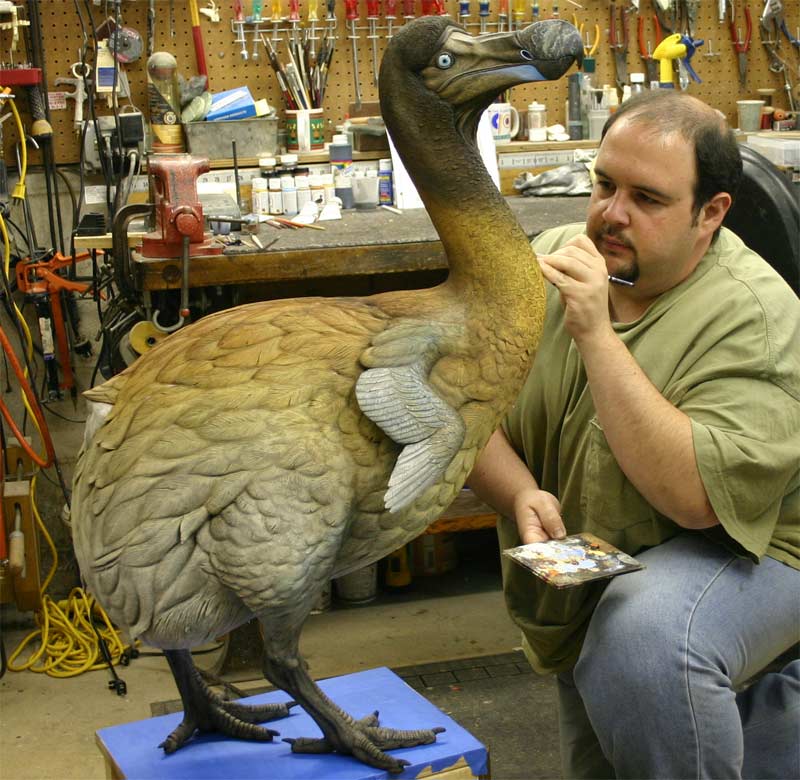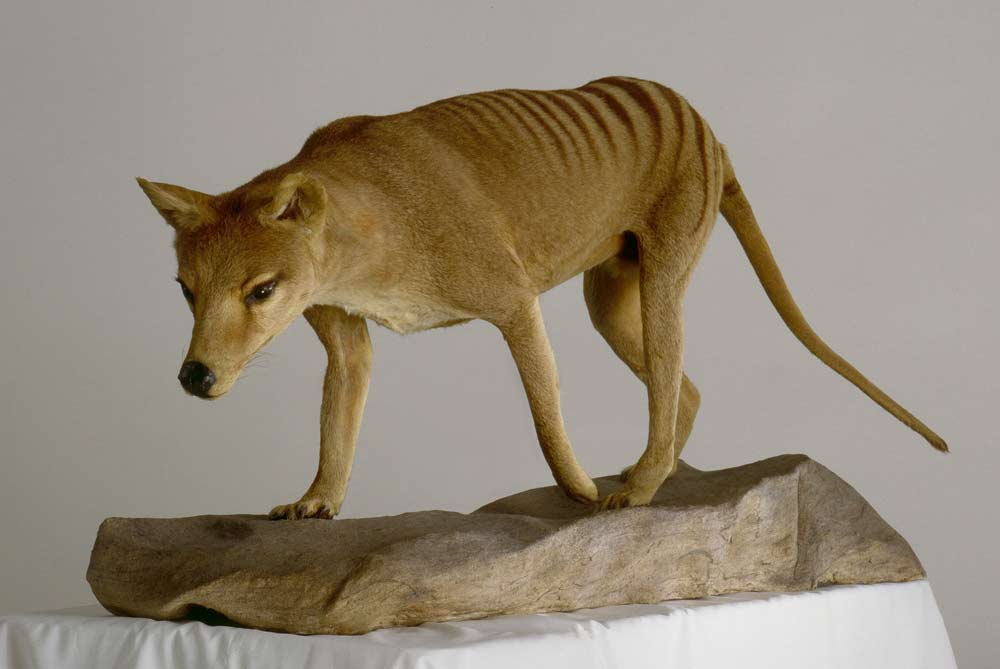How Taxidermy Keeps Extinct Animals Around

When a giant tortoise named Lonesome George died, his kind, the Pinta Island tortoises of the Galapagos, suffered the same fate as the unfortunate dodo bird: Both bird and tortoise were wiped off their island homes and into extinction.
But Lonesome George will be better preserved than any of the lone-gone dodos, which disappeared more than three centuries ago from Mauritius in the Indian Ocean.
More than a year after his death, Lonesome George's remains are now in Woodland Park, N.J., where a team of taxidermists is working to preserve his physical presence by making a mount from his skin, shell and other external parts. After Lonesome George's mount is complete, New York's American Museum of Natural History expects to display it before sending it back to the tortoise's native Galapagos. [See Photos of Lonesome George Being Preserved]
"I think there is a very powerful moment when you come face-to-face with a piece of taxidermy of an extinct species," said George Dante, a taxidermist and president of Wildlife Preservations, the company working on the Lonesome George mount. "It's not like flipping through a book or clicking online."
The missing dodo
Dante has restored specimens of other extinct species, including the passenger pigeon, the thylacine (a large, carnivorous marsupial that lived in Tasmania), the Carolina parakeet and others. But neither Dante nor any other taxidermist has ever worked on an original dodo specimen.
Like giant tortoises living on the Galapagos Islands, the dodos (Raphus cucullatus) that lived on Mauritius provided food for sailors. Seafarers' introduction of invasive species, such as goats and rats, also contributed to these formerly isolated animals' doom. [6 Extinct Species That Could Be Brought Back to Life]
Sign up for the Live Science daily newsletter now
Get the world’s most fascinating discoveries delivered straight to your inbox.
Dodos appear to have gone extinct in the late 17th century. The only taxidermic specimens are artists' recreations, made of materials such as pigeon or goose feathers, said Dante, who worked on a scientifically accurate model of the extinct bird for a museum in Singapore.

Research for the model revealed that reliable descriptions and depictions of the dodo are scant, according to a description of the project published in 2007 in the taxidermy-focused Breakthrough magazine.
"One of the big reasons there are so few remains of dodos is because people loved to eat them," saidChris Raxworthy, associate curator of herpetology at the American Museum of Natural History. "No one thought to set them aside for future generations."
Preserving a modern extinction
Meanwhile, Lonesome George's well-documented story took place in recent times. He was first spotted alone on La Pinta Island in 1971. Attempts to get him to mate were unsuccessful, and he became a conservation icon and an embodiment of humans' impact on the natural world. When Lonesome George died in June 2012, he was estimated to be about 100 years old.
At the Wildlife Preservations studio, Dante is several weeks into a process that is likely to take six or seven months. In the end, every visible part of the mount, except its glass eyes, will come from Lonesome George's remains. Foam, steel and wood will replace his muscle, skeletal structure and innards.
The pose selected for the mount will show off the tortoise's long neck.
"His head is going to be elevated about 3 feet (0.9 meters) above the ground, probably a lot higher than people imagine [a tortoise] can reach," Raxworthy said, adding that the tortoise's saddleback shell, which is raised in front, allowed the tortoise to rear his neck up higher than a domed shell would have.
A tragic menagerie
The museum is home to other pieces of taxidermy that preserve the remains of extinct species, which include the New Zealand giant moa, Labrador duck, passenger pigeon and thylacine, which is more commonly known as the Tasmanian wolf or Tasmanian tiger.

Although it's clear that Lonesome George was the last of his kind, scientists still debate whether Pinta Island tortoises are a subspecies of a single Galapagos giant tortoise or whether Pinta Island tortoises are one of many species of Galapagos giant tortoises, said Raxworthy, who supports designating them a full species.
But genetics has added a twist to Lonesome George's story. Research has revealed the existence of hybrid tortoises with La Pinta tortoise heritage on another island in the Galapagos. Through careful breeding, conservationists may one day be able to produce a tortoise that shares most of Lonesome George's La Pinta heritage, Raxworthy said.
Follow us @livescience, Facebook & Google+. Original article on LiveScience.com.











